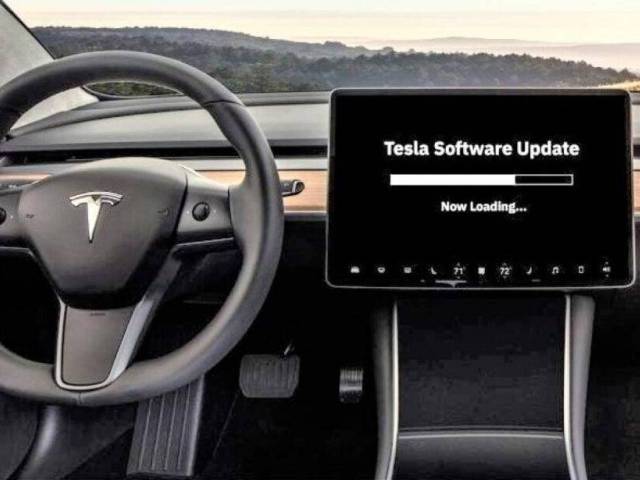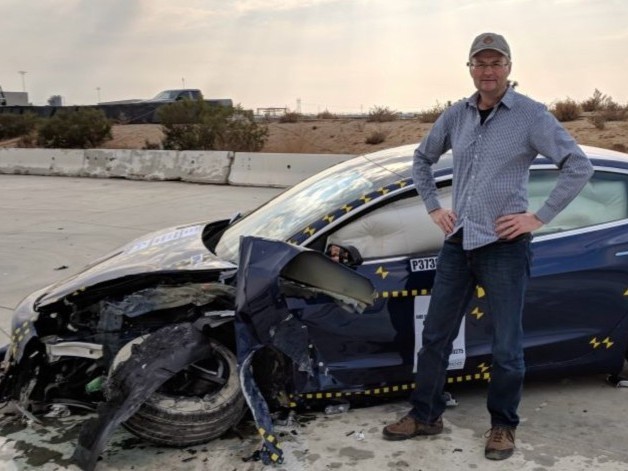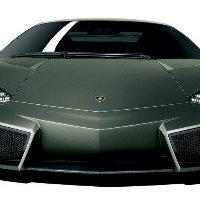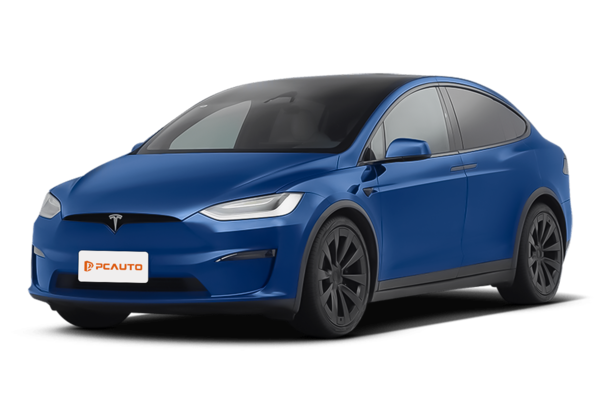Q
What's the weight of the Tesla Model X?
The Tesla Model X's weight varies depending on the specific configuration. The standard version tips the scales at around 2,450 kg to 2,500 kg, while the high-performance Plaid variant can push close to 2,600 kg. This heft is primarily down to its large-capacity battery pack and potent tri-motor setup. For Malaysian buyers, keeping an eye on the weight is crucial because it directly impacts range, handling stability, and – perhaps most notably – road tax calculations. Malaysia's road tax system is based on engine displacement or, for EVs, vehicle weight, so a heavier Model X could mean steeper annual costs. That said, despite its substantial mass, the Model X's battery placement and body design work wonders for weight distribution, delivering impressive cornering stability. Plus, the instant torque from its electric motors ensures it still hauls with plenty of pep. It's also worth noting Tesla's use of lightweight materials, like the aluminum body, which helps offset some of that battery weight, keeping the Model X competitive in the electric SUV space.
Special Disclaimer: This content is published by users and does not represent the views or position of PCauto.
Related Q&A
Q
How many seats does the Tesla Model X provide?
The Tesla Model X, a premium all-electric SUV, offers two seating configurations in the Malaysian market. The standard setup is a 5-seater, while the optional 6 or 7-seater versions cater better to larger families or group outings. The 6-seater features a 2+2+2 layout with a central aisle for easier access to the third row, whereas the 7-seater adopts the conventional 2+3+2 arrangement.
The Model X's Falcon Wing doors are a standout feature, proving especially handy in Malaysia's hot and rainy climate. They allow passengers to get in and out easily even in tight spaces without getting drenched. Complementing this, the panoramic windshield provides a sweeping view, and when paired with the efficient air conditioning system, it handles the tropical weather like a pro.
As an electric vehicle, the Model X benefits from incentives in Malaysia such as import tax exemptions. Its over 500km range is more than enough for a road trip from Kuala Lumpur to Penang. Add in its strong performance and advanced autonomous driving features, and it carves out a unique niche in the local premium SUV segment. However, buyers should note that choosing different seating capacities will affect both boot space and the overall price tag.
Q
How many cameras is the Tesla Model X equipped with?
The Tesla Model X comes loaded with 8 cameras, which form the backbone of its advanced Autopilot system. These cameras deliver a 360-degree panoramic view, covering every angle around the vehicle to enable features like lane keeping, automatic lane changes, and parking assist. Beyond the cameras, the Model X also packs 12 ultrasonic sensors and a front-facing radar. Together, this suite of sensors works in harmony to boost the car's environmental awareness. For drivers in Malaysia, this tech isn't just about upping safety—it's about tackling our local chaos, whether that's navigating jam-packed city streets or cruising down long stretches of highway. Tesla designed these cameras with high dynamic range and low-light performance in mind, making sure they hold their own in all weather conditions—pretty crucial given Malaysia's unpredictable climate. And the best part? These cameras get better over time through OTA updates, so your driving experience just keeps improving, no trip to the service center needed.
Q
How to open the doors of the Tesla Model X?
Opening the doors of a Tesla Model X is actually super straightforward. The Model X features that unique falcon-wing door setup – the front doors are regular power doors, while the rears are those upward-opening falcon wings. For the fronts, just tap the button on the door handle and they pop open automatically. As for the rears, you can fire them up via the center screen, key fob, or phone app. Here in Malaysia's sweltering heat, the Model X doors also have this smart sensing feature that automatically adjusts the opening angle based on surrounding space, so you won't accidentally hit anything. What's really cool is that the door design isn't just for show – those falcon wings can fully open even in tight spots, making it easy for passengers to get in and out. Plus, you can customize the door settings, tweaking the opening height and speed to your liking. These little touches really show how Tesla's thought about the user experience. For Malaysian drivers, the Model X's door design nails that perfect mix of tech appeal and everyday practicality.
Q
How to lock the Tesla Model X?
Locking your Tesla Model X is straightforward—just use your key fob or the mobile app. When you walk away with either, once you’re about 5 meters out of range, the X locks up automatically, tucks in the mirrors, and gives a quick headlight flash to confirm it’s secure. Prefer doing it manually? Hop on the touchscreen, navigate to Controls > Safety > Lock, and you’re set. And if you’re feeling hands-free, just say “Lock the car” via voice command—it’s that easy.
What’s really impressive is how Tesla’s passive entry holds up here in Malaysia’s heat. No glitches with sensor sensitivity, even when it’s sweltering outside. Plus, the Bluetooth phone key works like a charm in underground parking where there’s zero cell service—they’ve clearly thought through real-world use cases.
Worried you left a window open or the trunk ajar? The system checks automatically when locking and alerts you, making sure everything’s sealed tight. Super useful with our frequent rain showers. Pro tip: Keep an eye on your key fob battery and keep the mobile app updated for the smoothest experience.
Q
How long does it take to charge the Tesla Model X?
The charging time for the Tesla Model X depends on the charging equipment used and battery capacity. When it comes to common charging methods in Malaysia, using a Tesla Supercharger V3 allows you to charge from 20% to 80% in approximately 30 minutes, with a full charge taking around 1 hour. If you're using a home 240V power source, like the Wall Connector, you can add roughly 40 kilometers of range per hour, and a full charge will take between 8 to 12 hours.
The Model X Long Range variant has a battery capacity of about 100 kWh, though actual charging speeds can be influenced by ambient temperature, battery condition, and charger power output. Given Malaysia's hot climate, it's advisable to charge in shaded areas or indoor parking lots whenever possible to maintain optimal battery efficiency.
Additionally, Tesla owners can monitor charging progress in real-time and schedule charging times via the mobile app, taking advantage of lower electricity rates during off-peak night hours to save costs. Malaysia's charging network is gradually expanding; aside from Tesla's proprietary Supercharger stations, the Model X is also compatible with some third-party CCS2 fast-charging stations, though their power output may be slightly lower than the original Tesla equipment.
Q
How long does it take to charge the Tesla Model X?
The charging time for the Tesla Model X depends on the charging equipment used and the battery capacity. When it comes to common charging methods in Malaysia, using a Tesla Supercharger V3 gets you from 20% to 80% in about 30 minutes, and a full charge takes roughly an hour. If you're using a home 240V power source, like the Wall Connector, you can expect to add around 40 kilometers of range per hour, with a full charge potentially taking 8 to 12 hours. The exact time can vary depending on the battery's condition and the ambient temperature.
Given Malaysia's hot climate, it's a good idea to charge your Model X in the shade to prevent the battery from overheating. That said, Tesla's built-in battery management system does a solid job of optimizing charging efficiency. Plus, you can keep an eye on the charging progress in real time using the mobile app.
It's worth noting that Malaysia's charging infrastructure is expanding rapidly. Beyond Tesla's dedicated Superchargers, some third-party charging stations are also compatible with Tesla models, though they might offer lower power outputs. For longer road trips, I'd recommend using the navigation system to plan routes that include Supercharger stops to keep things running efficiently.
Q
How many miles can Tesla Model X drive?
The range of the Tesla Model X depends on the specific variant and battery setup. Right now, the latest Model X Long Range can hit around 560 kilometers (about 348 miles) under WLTP testing standards. The high-performance Plaid model, though, has a slightly lower range at approximately 528 kilometers (around 328 miles). But let's be real, actual range varies based on how you drive, the road conditions, AC usage, and how much you're carrying. In Malaysia's hot climate, cranking up the AC regularly might take a small bite out of that range.
Tesla's battery tech uses advanced lithium-ion packs that support fast charging – plug into a V3 Supercharger, and you can get up to 80% charge in roughly 30 minutes. For Malaysian owners, when planning a road trip, it's smart to make use of Tesla's widespread Supercharger network across the country. Also, keeping an eye on battery health through regular maintenance helps keep it performing at its best.
Electric vehicle range has come a long way in recent years, and the Model X, as a luxury electric SUV, delivers enough juice to cover most families' daily commutes and weekend getaways with ease.
Q
When was the Tesla Model X launched?
Tesla's Model X first hit the road in the US back in September 2015, and let me tell you, this all-electric SUV didn't just arrive—it exploded onto the scene. That wild falcon-wing door design paired with some seriously impressive performance had everyone talking. Over in Malaysia, we had to wait a bit longer, though. Official imports started trickling in around 2017, aiming to satisfy the growing hunger for premium EVs in the market.
The Model X wasn't just about turning heads, though. It brought the goods with solid range and that cutting-edge Autopilot tech we've come to expect from Tesla, cementing its spot as a key player in the lineup. In Malaysia, things really started to heat up for EVs like the Model X thanks to government sweeteners—think tax breaks on imports and the like. Suddenly, more folks were sitting up and taking notice.
And let's not forget the performance variants. Remember the P100D? That thing shattered expectations for what an electric SUV could do, rocketing from 0-100km/h in a mind-blowing 2.9 seconds. Total game-changer, showing just how far Tesla was ahead of the curve in EV tech. With Malaysia's charging network slowly but surely getting better, I'd bet we'll be seeing a lot more of these high-end EVs like the Model X on the roads in the years to come.
Q
How to start the Tesla Model X?
To start up your Tesla Model X, first make sure your key card or paired smartphone’s Bluetooth is within range. The doors will unlock automatically as you approach the vehicle. Slide into the driver’s seat and press down on the brake pedal – that’ll wake up the central touchscreen and put the car into standby mode. From there, just shift into Drive or Reverse and you’re good to go. If you’re using the key card, remember to place it on the induction area in the center armrest to activate the system.
For our Malaysian drivers, keep in mind that the tropical heat can sometimes mess with smartphone Bluetooth connections. It’s a smart move to keep your key card handy as a backup. One really handy feature for our tight local parking spots is how the Falcon Wing doors automatically adjust their opening angle in cramped spaces – total game-changer.
Also, Tesla’s Sentry Mode is a must in Malaysia’s busy urban areas, using the car’s cameras to keep an eye on things around you. And don’t sleep on the mobile app’s remote pre-cooling function – perfect for beating that sweltering weather before you even step inside.
A quick heads-up: the Model X’s 17-inch touchscreen handles everything from climate control to entertainment and vehicle settings, which is a big shift from traditional gas cars. New owners should definitely take some time to get used to the interface – it’ll make your driving experience way smoother once you’re dialed in.
Q
How fast is the Tesla Model X?
The Tesla Model X maxes out at 262 km/h, and the Plaid version rockets from 0-100 km/h in just 2.6 seconds—seriously mind-blowing performance. This electric SUV isn’t just about straight-line speed though; with its beefy tri-motor setup and cutting-edge battery tech, it delivers that blistering acceleration *and* impressive range. We’re talking around 560 km on a full charge (WLTP cycle), which makes it more than capable for those longer drives across Malaysia.
Then there’s the tech factor: those iconic falcon-wing doors, the massive 17-inch touchscreen, and Tesla’s Autopilot suite—this thing oozes future vibes. For Malaysian buyers, it’s not just a high-performance EV; it’s a statement about where driving is headed. And let’s not forget, EVs typically crush gas-powered cars in acceleration because electric motors deliver maximum torque instantly. The Model X is a perfect example of that, and its low center of gravity only adds to the stable handling, making it a solid fit for Malaysia’s varied road conditions.
Popular Cars
Model Year
Car Compare
Car Photo
Latest Q&A
Q
Is the 1.5 L 4 cylinder?
Yes, a 1.5L engine is typically a 4-cylinder setup—the most common configuration for small to mid-sized displacements. This layout strikes a solid balance between fuel efficiency and power output, making it ideal for daily commuting and family use. Four-cylinder engines are relatively simple in design, cheaper to maintain, and benefit from proven technology that delivers smooth operation. You'll find this configuration widely used by mainstream brands like Honda, Toyota, and Mazda. While there are some 1.5L 3-cylinder options out there, the 4-cylinder remains the go-to choice, especially in models prioritizing durability and refinement. If you're shopping for a 1.5L-powered car, pay attention to specific tech features—turbocharging, direct injection, etc.—as these can significantly impact real-world driving dynamics and fuel economy.
Q
What is the displacement of a V8 engine?
The displacement of a V8 engine typically ranges from 4.0 to 6.2 liters, depending on the vehicle and its purpose. For example, high-performance sports cars often pack a 5.0-liter or larger V8, while trucks and SUVs usually stick with something between 4.3 and 5.7 liters. Known for its brute power and smooth operation, the V8 is a go-to for acceleration and towing—though its thirst for fuel is something buyers always weigh up.
These days, turbocharging has changed the game. Smaller-displacement V8s (like a twin-turbo 4.0L) can now deliver big-block performance with slightly better efficiency. And let’s not forget the sound—few things beat the roar of a tuned V8 exhaust, a big reason why enthusiasts love ‘em.
If you’re into V8s, keep an eye on local used car listings or auto shows—you’ll often spot some gems there.
Q
What is the difference between 1l and 1.2 L engine?
The key difference between 1-liter (1L) and 1.2-liter (1.2L) engines comes down to displacement—the total volume of all cylinders in an engine, measured in liters. Generally, a larger displacement means more power and torque, so a 1.2L engine will likely feel stronger during acceleration, highway driving, or when tackling hills with a load. That said, it’ll also drink a bit more fuel compared to the 1L.
The 1L, being smaller, prioritizes fuel efficiency, making it a smart pick for city commuting or everyday runs. On the flip side, the 1.2L’s extra performance often means higher manufacturing costs, which might bump up the car’s price tag. Plus, the 1L’s compact size fits better in smaller or budget-friendly models.
Your choice really hinges on driving needs: go for the 1.2L if you regularly hit the highway or want more grunt, but stick with the 1L if you’re mostly urban-bound and watching fuel bills. Oh, and don’t forget—tech like turbocharging or variable valve timing can squeeze near-equal performance from smaller engines these days, so specs alone don’t tell the full story. Always check how the engine’s tuned.
Q
What does 5.7 liter engine mean?
A 5.7-liter engine refers to a total displacement of 5.7 liters, meaning all cylinders combine for a total working volume of 5,700 cubic centimeters. Generally, a larger displacement allows the engine to take in more air and fuel, delivering stronger power and torque—making it ideal for performance-oriented vehicles or those built for heavy-duty work, like pickup trucks, full-size SUVs, or muscle cars.
In the local market, you’ll often find big-displacement engines in American-branded vehicles. These engines excel at high-speed cruising or towing heavy loads, though they do come with higher fuel consumption and increased running costs.
Thanks to advancing technology, many automakers now use turbocharging or hybrid systems to help smaller engines deliver power comparable to older, larger naturally aspirated units—like how some modern 2.0L turbocharged engines can match the performance of older V6 engines while being far more fuel-efficient.
If fuel economy is a priority, a smaller turbocharged or hybrid model might be the better choice. But if you value the smooth, raw power of a classic big-block, a 5.7-liter engine remains a timeless option.
Q
What liter engine is a V6?
The displacement of a V6 engine isn't set in stone—it typically ranges between 2.5 and 4.0 liters, depending on the vehicle's design and purpose. For example, a family sedan might pack a 2.5L or 3.0L V6, while performance cars or pickups could go for 3.5L or larger. Displacement directly impacts power output and fuel economy: bigger usually means stronger, but thirstier too.
Named for its six cylinders arranged in a V-shape, the V6 strikes a sweet spot—delivering smoother operation and better balance in a compact package compared to four-cylinder engines, while being more fuel-efficient than V8s. That's why it's a popular choice for midsize sedans and SUVs.
These days, with turbocharging becoming commonplace, smaller-displacement V6 turbos can match the punch of older, bigger engines while sipping less fuel. Choosing one? Think about your daily needs. A 2.5L works fine for city commutes, but if you're frequently hitting the highway or towing, step up to 3.0L or above.
View MoreRelated News

Tesla Releases Spring 2025 Update on Software, Offering New Features for All Models
Kevin WongApr 14, 2025

Tesla Collision Safety Architect Petter Winberg Leaves, Once Leading Multiple Tesla Models
RobertMar 17, 2025

Geely EX2, Model 3/Y become the three best-selling electric vehicles in the third quarter of 2025
MichaelDec 11, 2025

Born to Challenge Model Y, what are the powerful features of Zeekr 7X?
Kevin WongNov 25, 2025

2025 Xpeng G6 launched, still a strong competitor to Model Y
RobertOct 14, 2025
View More


















Pros
Cons